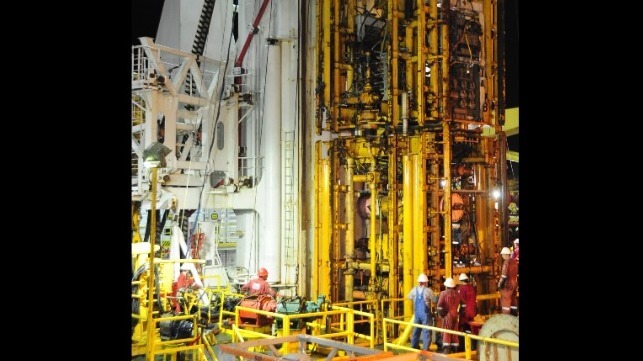BSEE Seeks to Strengthen Rules on Blowout Preventer Safety

The U.S. Department of the Interior seeks to strengthen blowout preventer regulations that were relaxed in 2019 under the Trump administration, the agency announced Monday.
After the Deepwater Horizon spill in 2010, the department's Bureau of Safety and Environmental Enforcement (BSEE) imposed stricter rules for blowout preventer design, testing and maintenance. Those took effect in 2016, but were loosened slightly in 2019. In a new proposed rulemaking, BSEE would roll back some of those changes and clarify earlier language.
“These proposed revisions to the Well Control Rule are the result of knowledge and experience gained by stakeholders and BSEE since the 2019 rule was implemented. They will protect workers’ lives and the environment from the potentially devastating effects of blowouts and offshore oil spills,” said BSEE Director Kevin M. Sligh Sr.
The "narrowly focused" new rulemaking would address BOP requirements, testing and oversight. It would require offshore field operators to submit BOP failure data directly to BSEE, not to third parties like the U.S. Bureau of Transportation Statistics, which anonymizes the data before releasing it. This would speed up BSEE's safety-trends analysis and help it identify operators who are having a series of problems.
It would also require accreditation of the independent third party organizations who certify BOPs' functionality. The 2019 revision removed accreditation requirements, and BSEE's "experience with independent third party certification and verifications" over the last three years has led the agency to believe that accreditation is needed to increase accountability. A separate but related measure would require operators to submit BOP testing data directly to BSEE, without waiting for BSEE to request it.
Since the initial rule in 2016, BSEE has not required the retrofit of dual shear ram BOPs on existing floating facilities. After a review of every existing facility affected, it has decided to require the installation of a dual-shear ram BOP at the next time that the facility replaces its BOP, even if this requires structural work to accommodate the larger unit. The reason, BSEE says, is simply that dual-shear ram systems are safer, and the work can be done when the rig is out of service for the replacement of its existing BOP.
